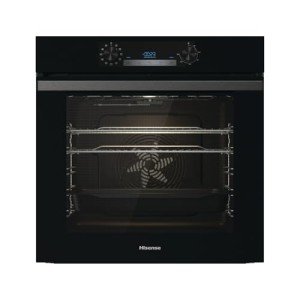The Future of Culinary Convenience: Integrated Ovens and Hobs
In the ever-evolving world of cooking area design, integrated ovens and hobs are at the leading edge of modern-day cooking development. These appliances not only guarantee visual appeal but also enhance functionality and performance, changing how we prepare our meals. As house owners progressively seek to develop seamless, trendy, and user-friendly cooking spaces, the integration of ovens and hobs provides a perfect service. This article explores what integrated ovens and hobs are, their advantages, and crucial factors to consider for those seeking to upgrade their cooking area.
What Are Integrated Ovens and Hobs?
Integrated ovens and hobs are kitchen area home appliances effortlessly built into the cabinetry or counters, instead of sticking out as separate entities. Integrated ovens are created to blend into cooking area units, offering a flush finish with surrounding cabinetry. Similarly, integrated hobs are mounted straight into the counter top, developing a streamlined appearance. This minimalist style technique not just elevates the visual appeal of the kitchen area but also makes the most of readily available area.
Types of Integrated Ovens
Single Ovens: These standalone units are developed for simpleness and ease of usage, including a single cooking chamber and multiple cooking modes such as baking, grilling, and roasting.
ovens integrated Ovens & Hobs : Ideal for larger families or devoted cooks, double ovens supply 2 independent cooking compartments, enabling several dishes to be ready simultaneously at different temperature levels.
Combination Ovens: Blending conventional baking and steam cooking, combination ovens use adaptability for different cooking requirements, maintaining moisture while ensuring completely prepared meals.
Types of Integrated Hobs
Gas Hobs: These hobs permit accurate temperature control and immediate heat, making them a preferred amongst professional chefs and cooking enthusiasts.
Induction Hobs: Known for their performance and safety, induction hobs utilize electro-magnetic energy to heat pots and pans directly. They are quick to heat and cool off rapidly, reducing the threat of burns.
Electric Hobs: Featuring smooth ceramic or glass surfaces, electric hobs are simple to tidy and offer an even heat circulation for a range of cooking designs.
Benefits of Integrated Ovens and Hobs
1. Space Optimization
With the trend of smaller living areas and open-concept homes, integrated devices help make the most of kitchen area area. By fitting seamlessly into kitchen cabinetry, kitchens can appear bigger and more open, reducing clutter and improving visual appeal.
2. Aesthetic Appeal
Integrated ovens and hobs supply a smooth, modern look that fits well within various style styles. The capability to tailor cabinetry guarantees that property owners can achieve a cohesive appearance that matches their design, whether modern, traditional, or something in between.

3. Enhanced Functionality
Integrated appliances typically feature innovative functions such as wise technology, self-cleaning alternatives, and various cooking modes. These enhancements not just improve the cooking procedure however also improve usability, making cooking an enjoyable experience.
4. Security Features
Integrated hobs, particularly induction designs, are thought about safer than conventional cooking surface areas. They cool off rapidly, reducing the danger of burns, and frequently consist of features like kid locks and automatic shut-off for additional security.
Secret Considerations When Choosing Integrated Ovens and Hobs
1. Area and Layout
Before buying integrated devices, consider the space available in your cooking area. Step the kitchen cabinetry and countertops thoroughly to ensure an ideal fit, permitting for appropriate ventilation and setup space.
2. Cooking Needs
Assess your cooking habits and choices. If you often entertain or cook big meals, a double oven may be the very best option. On the other hand, if you're an occasional chef, a single oven might be sufficient. Likewise, choosing between gas, electric, or induction hobs will depend on your cooking design and convenience level.
3. Energy Efficiency
With rising energy costs and growing ecological concerns, selecting energy-efficient home appliances can conserve money in the long run. Look for items with high energy ratings and features like programmable timers and eco-modes.
4. Quality and Brand
Investing in top quality devices from reliable brands guarantees resilience and efficiency. Reading consumer reviews and seeking suggestions can assist limit the very best choices tailored to your requirements.
Conclusion
Integrated ovens and hobs are more than just kitchen area home appliances; they represent a shift towards a more practical, elegant, and efficient approach to cooking. As homeowners focus on seamless design, benefit, and advanced features, these integrated solutions will undoubtedly form the cooking areas of tomorrow. Whether remodeling a kitchen area or creating a new one from scratch, incorporating ovens and hobs is a financial investment that assures to improve both culinary experiences and the overall visual of the home.
